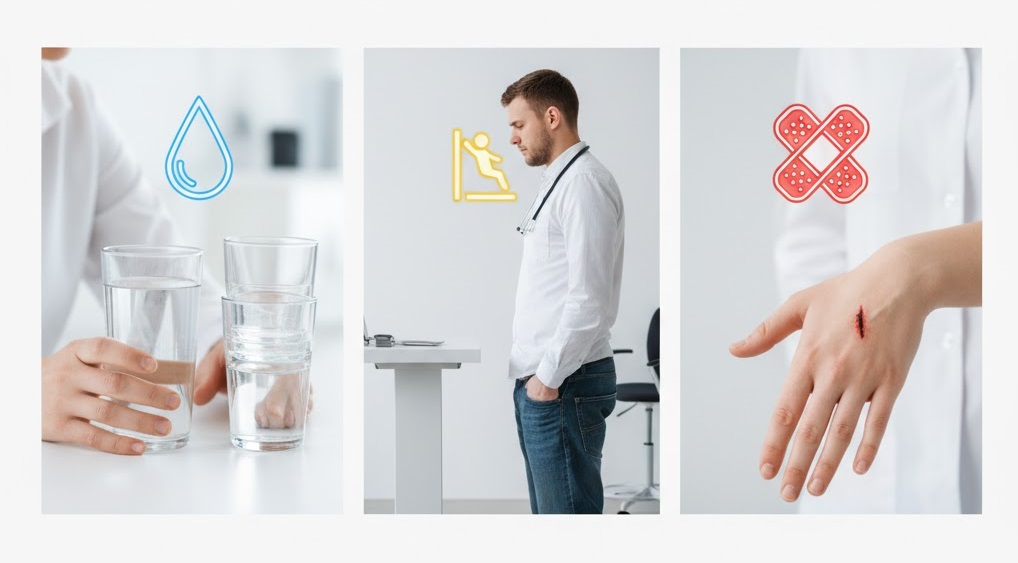In a time when mental health awareness is growing across the United States, more Americans are asking one essential question: “How does therapy actually work?” Whether you’re struggling with anxiety, depression, relationship challenges, or simply seeking personal growth, therapy offers a scientifically supported path toward emotional healing and resilience.
This guide will walk you through the core principles of how therapy works, the different types of counseling available in America, and what to expect in your first sessions, backed by research from major universities and real-world insights from mental health experts.
Why Americans Are Turning to Therapy More Than Ever
Mental health care in the U.S. has evolved dramatically over the past decade. According to the American Psychological Association (APA), the demand for mental health services increased by nearly 40% since 2020, with more Americans seeking therapy to cope with stress, burnout, trauma, and loneliness.
Key Statistics on Therapy in the U.S.
| Metric | Data (as of 2025) | Source |
|---|---|---|
| Adults receiving therapy annually | 1 in 5 Americans | CDC |
| Online therapy usage | Increased by 80% since 2020 | Pew Research Center |
| Most common reason for seeking help | Anxiety disorders (42%) | National Institute of Mental Health |
| Average cost per session | $100–$200 | Psychology Today |
This surge reflects not just greater stress levels, but also reduced stigma and more accessible options, including online therapy platforms like BetterHelp, Talkspace, and Therapist.com.
Understanding How Therapy Works: The Science Behind It
At its core, therapy works by helping individuals identify, understand, and reframe unhealthy thought and behavior patterns. But there’s a deeper biological and psychological mechanism behind this transformation.
1. Neuroplasticity: How Therapy Rewires the Brain
Research from Harvard Medical School’s Department of Psychiatry shows that psychotherapy — particularly Cognitive Behavioral Therapy (CBT) — promotes neuroplasticity, the brain’s ability to form new neural connections.
This means therapy doesn’t just “talk things out”; it physically changes how your brain processes emotions and thoughts. Over time, these changes lead to better emotional regulation, less reactivity, and stronger coping mechanisms.
2. Emotional Processing and Self-Awareness
Therapy provides a safe space to explore emotions you may have suppressed for years. Studies from Stanford University demonstrate that discussing emotions with a trained therapist activates the prefrontal cortex — the brain region responsible for rational thinking — which helps reduce the intensity of emotional distress.
3. Relationship Repair and Attachment Healing
Many forms of therapy focus on attachment theory, a concept developed by psychologist John Bowlby. According to research from Columbia University, therapy can help individuals develop more secure attachments, improving both self-worth and interpersonal relationships.
Common Types of Therapy in the United States
Choosing the right type of therapy can feel overwhelming. Below is a breakdown of the most common forms of therapy used across America, including their focus, method, and who they’re best for.
| Type of Therapy | Focus Area | Best For | Scientific Support |
|---|---|---|---|
| Cognitive Behavioral Therapy (CBT) | Changing negative thought patterns | Anxiety, depression, OCD | Backed by 1000+ studies (Harvard, APA) |
| Dialectical Behavior Therapy (DBT) | Emotional regulation, mindfulness | Borderline personality disorder, trauma | University of Washington studies |
| Psychodynamic Therapy | Understanding unconscious motivations | Long-term self-awareness, identity | Columbia University, psychoanalytic research |
| Humanistic/Existential Therapy | Personal growth, meaning-making | Individuals feeling “stuck” or lost | University of Chicago (Rogers, Maslow) |
| Family & Couples Therapy | Relationship communication | Marital issues, parenting conflict | Gottman Institute, APA |
| Trauma-Focused Therapy (EMDR) | Healing trauma through eye movement | PTSD, abuse survivors | Harvard & Johns Hopkins clinical trials |
| Online Therapy / Telehealth | Convenient digital sessions | Busy individuals, remote areas | National Institute of Mental Health |
Each of these methods offers unique benefits — and the “right” choice often depends on your goals, comfort level, and therapist’s expertise.
What to Expect in Your First Therapy Session
If you’re new to counseling, it’s natural to feel anxious before your first session. Understanding the process can help you feel more at ease.
1. Initial Assessment
The therapist will ask about your personal background, mental health history, and goals for therapy. This helps them tailor their approach to your needs.
2. Building Trust
The first few sessions focus on establishing a therapeutic alliance — a trusting, nonjudgmental relationship that is crucial for progress. Research from University College London (UCL) found that the strength of this alliance predicts up to 30% of therapy’s effectiveness.
3. Setting Goals
You and your therapist will define clear, measurable goals, such as reducing panic attacks, improving communication, or processing grief.
4. Consistency Over Time
Therapy is a process, not a quick fix. Most individuals begin noticing significant improvements after 8–12 sessions, depending on the frequency and depth of sessions.
How Therapy Helps: The Real Benefits Backed by Science
Therapy isn’t just about emotional relief — it brings measurable benefits for both mental and physical well-being.
1. Reduces Stress Hormones
Studies from Yale University show that regular psychotherapy reduces cortisol levels, lowering the body’s stress response.
2. Improves Relationships
Therapy helps individuals develop empathy, assertiveness, and communication skills, which strengthen personal and professional relationships.
3. Enhances Physical Health
Chronic stress and unresolved trauma can manifest as headaches, digestive issues, or heart problems. Therapy can improve immune function and reduce inflammation, according to research from University of California, Berkeley.
4. Builds Long-Term Resilience
Learning coping strategies equips people to handle future challenges more effectively, reducing the risk of relapse into depression or anxiety.
Is Therapy Worth It? Cost and Accessibility in the U.S.
While therapy is a proven investment in mental well-being, cost remains a common concern among Americans.
| Therapy Type | Average Cost per Session | Insurance Coverage |
|---|---|---|
| In-person individual therapy | $120–$200 | Often covered |
| Online therapy (BetterHelp, Talkspace) | $60–$100 | Partially covered |
| Group therapy | $40–$70 | Usually covered |
| Sliding-scale clinics | $20–$80 | Based on income |
Insurance and Affordable Options
- Employer Assistance Programs (EAPs): Many U.S. companies offer free short-term therapy through EAPs.
- Community Health Centers: Funded by the federal government, these clinics provide affordable mental health services.
- University Training Clinics: Psychology programs (e.g., Stanford, NYU, UCLA) often offer discounted therapy with supervised graduate students.
How to Choose the Right Therapist
Finding a compatible therapist is crucial for success. Here’s a step-by-step guide:
Step 1: Identify Your Goals
Decide whether you want to focus on trauma, relationships, anxiety, or personal development.
Step 2: Verify Credentials
Look for licensed professionals (LCSW, LMFT, LPC, or Ph.D.) in your state.
Step 3: Check Specializations
A therapist trained in CBT for anxiety or EMDR for trauma will better fit your specific needs.
Step 4: Read Reviews and Try a Consultation
Many therapists offer free 15-minute consultations — a chance to assess rapport and comfort.
Online vs. In-Person Therapy: Which Is Better?
In recent years, online therapy has become a mainstream alternative.
Advantages of Online Therapy
- More affordable and flexible
- Accessible from anywhere in the U.S.
- Discreet and comfortable
Advantages of In-Person Therapy
- Stronger non-verbal connection
- Suitable for complex or severe cases
- Easier to build deeper trust
According to a 2023 University of Michigan study, both online and in-person therapy show similar success rates for most mental health conditions, though in-person therapy still excels in trauma-focused cases.
How to Make Therapy More Effective
To get the most out of therapy, experts recommend these science-backed practices:
- Be Honest and Open — Authentic communication accelerates progress.
- Do Homework Between Sessions — CBT and DBT often include worksheets or reflection tasks.
- Track Your Emotions — Journaling enhances emotional awareness.
- Stay Consistent — Results accumulate through regular attendance.
- Give Feedback — Tell your therapist what’s working and what isn’t.
Frequently Asked Questions (FAQs)
1. How long does therapy take to work?
Most people begin noticing progress after 8 to 12 sessions, but long-term therapy (6 months or more) leads to deeper transformation.
2. Can therapy really change the brain?
Yes. Studies from Harvard and Stanford confirm that psychotherapy promotes neuroplasticity, allowing the brain to form healthier thought patterns.
3. Is online therapy as effective as in-person therapy?
For most conditions like anxiety, depression, and stress, online therapy is equally effective, according to the American Psychological Association (APA).
4. What’s the difference between therapy and counseling?
“Counseling” often focuses on specific problems or short-term goals, while “therapy” typically involves deeper emotional and behavioral work.
5. Can I go to therapy even if I’m not mentally ill?
Absolutely. Many Americans use therapy for personal growth, self-confidence, and emotional awareness, not just to treat mental illness.
6. How do I know if my therapist is a good fit?
You should feel safe, heard, and understood. Research from UCL shows that the therapeutic relationship itself predicts success more than the specific technique used.



